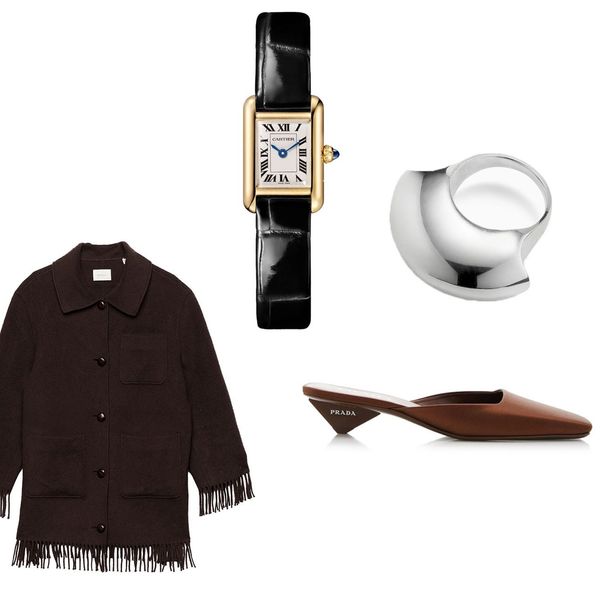This Summer, The Vibe Is...Butter
It's taken over fashion, beauty and our IG feeds. Is there a more ominous meaning behind it all?
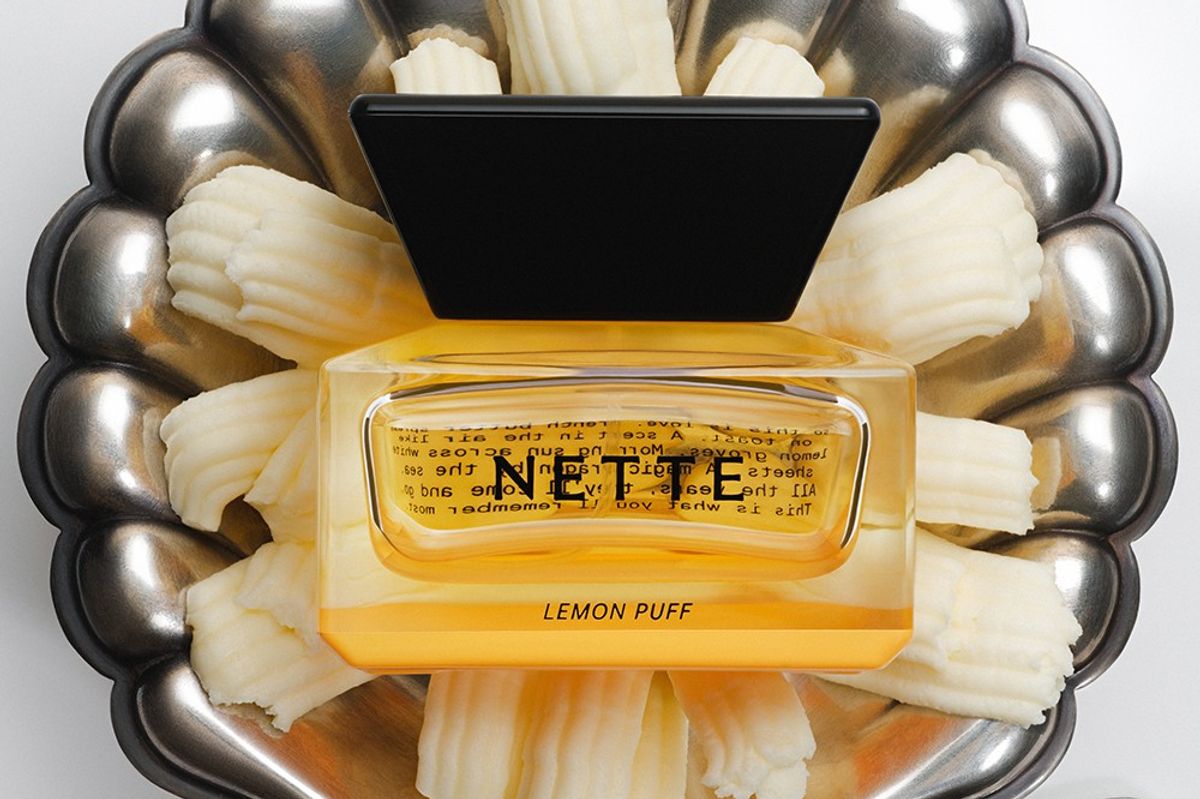
Every year as summer approaches, a distinct vibe emerges. From 1967’s Summer of Love and 2019’s Hot Girl Summer (thanks to Meg Thee Stallion) to Charlie XCX’s Brat Summer of 2024, there is a predilection to attach summer to a cultural moment that we can all take part in—whether it's through a film, song, mood, or color.
This year, it’s the summer of butter. The mellow shade is taking over nail salons, Instagram feeds, e-comm shopping carts, and fashionable hotels everywhere (see: the Jacquemus beach club in Monte Carlo Beach and the Burberry pop-up at The Standard Ibiza).
Butter isn’t exactly a new concept in beauty. Product names like Summer Fridays “Lip Butter Balm” and Rhode’s “Barrier Butter” evoke butter’s smooth, spreadable softness, and what your skin will look and feel like after using these products. But suddenly, butter isn’t just a texture or shade. It’s everywhere–from props to packaging, visuals to perfume notes. The question is: why?
A Treat For The Senses
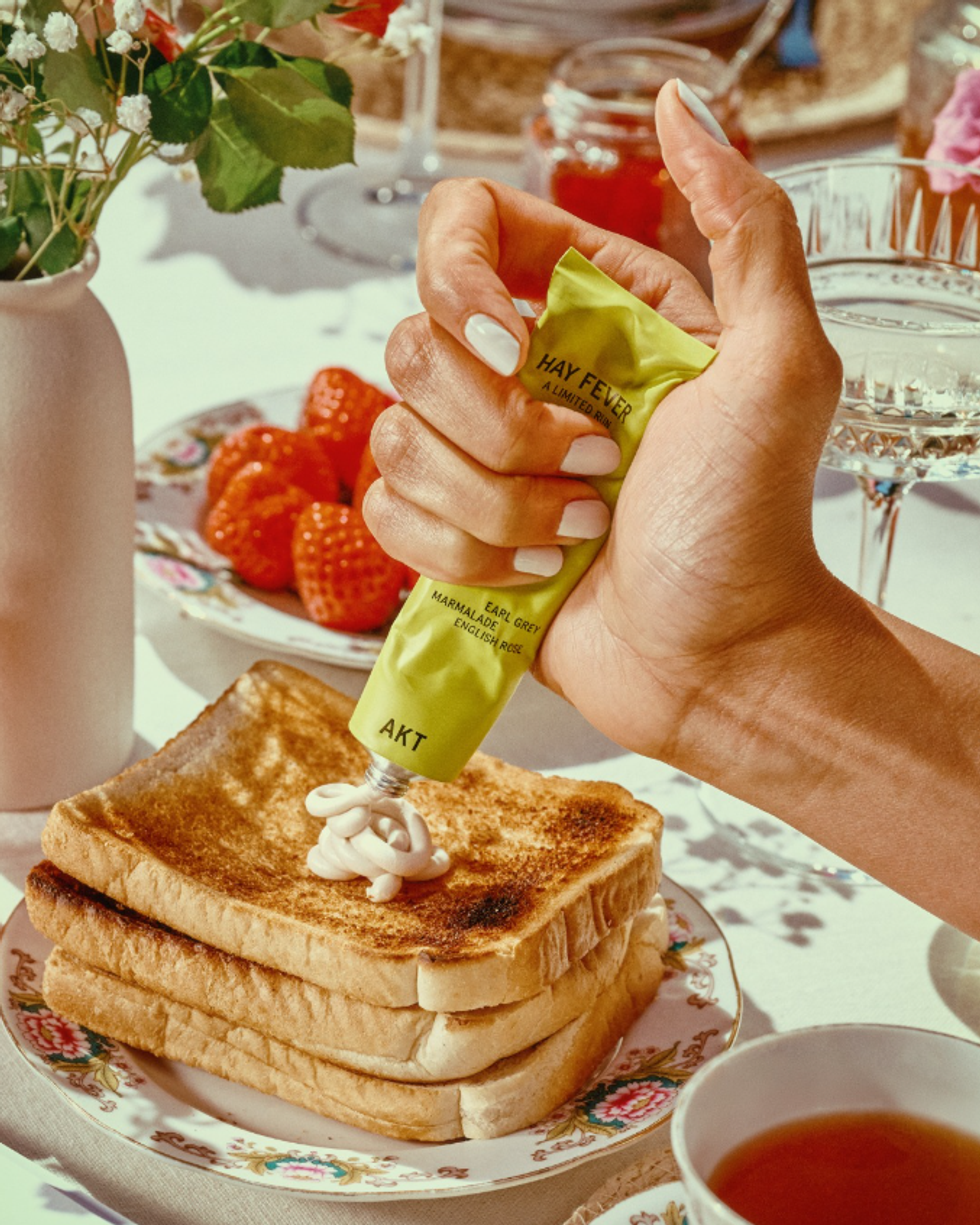
When it comes to cooking, butter is beloved for its universality and versatility. “It's a natural ingredient that’s a basic daily staple for so many,” says Dominique Ansel, iconic pastry chef and owner of Dominique Ansel Bakery. “But [it’s also an] affordable luxury that's decadent and comforting at the same time” When it comes to marketing, it feels like every brand is suddenly using butter to showcase a product—even when it has nothing to do with the product being marketed. “There’s a definite cultural shift in beauty and fashion toward sensorial richness and food-inspired visuals,” says Ed Currie, co-founder of deodorant brand AKT. “Butter, in particular, has become a visual metaphor — I think Jacquemus really lit the fuse with their buttery yellow aesthetic, drawing from their French roots and the romanticism of food as fashion.”
Erin Starkweather, creative director of the beauty brand Saie, explains it from a more technical standpoint: “Good prop styling is a make or break moment for the shoot... Whether it's the way the actual product you’re shooting is placed, or bringing in an unrelated prop (like butter), it's a way to draw the viewer further into the mood or positioning of a campaign, and set the scene without using words.”
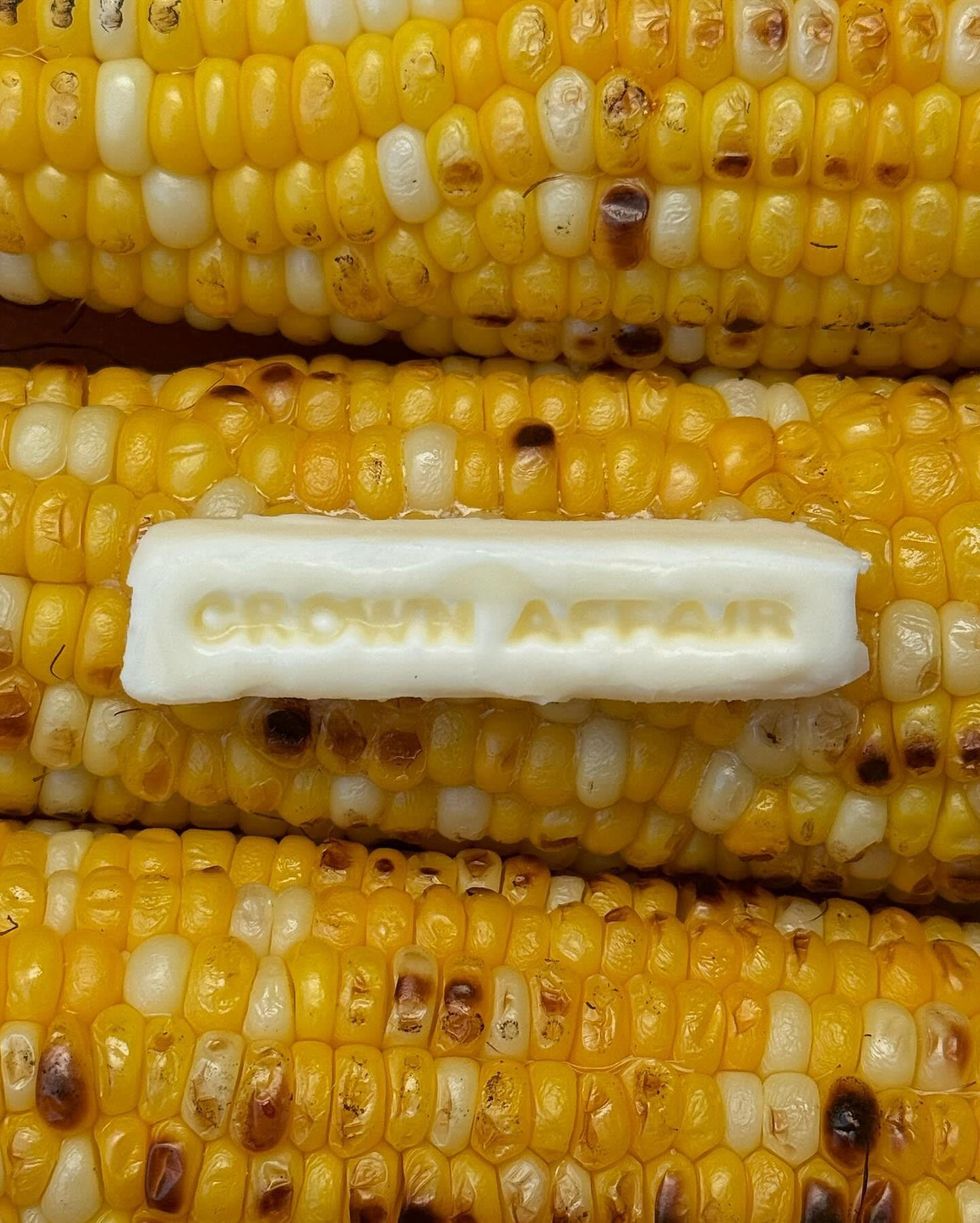
Crown Affair
While butter could be most easily connected to body care, we’re also seeing it appear in categories like haircare and even fragrance. One of indie fragrance’s hottest new launches is Dandelion Butter, by Chicago-based perfume brand Clue Perfumery, with the name and visuals evoking a sweet and salty daydream of a summer in the midwest, playing with the note in a more conceptual way.
On a more mass scale, the fine fragrance brand Nette prominently used butter in the campaign for their new scent, Lemon Puff. Butter served as not only a visual inspiration for Lemon Puff, but for the experience of the scent itself. “When we were developing the perfume with Jean-Christophe Herault in Paris, we talked a lot with him about wanting to do a sunny citrus but in a new way, with a touch of buttery gourmand,” says founder Carol Han Pyle. “Butter is a less obvious gourmand than, say, caramel or sticky vanilla. It’s more subtle, it requires your nose to look for it.”
Dianna Cohen, founder of the haircare brand Crown Affair, notes that her brand’s recent use of butter on a social media campaign was as much about tapping into the sensoriality as it was the larger feelings that butter evokes. “Butter is soft yet structured, indulgent yet simple—qualities I associate with our approach to haircare,” she says. "It [feels] like an unexpected, but intuitive metaphor.”
Currie also chose butter imagery for AKT’s new scent, Hay Fever, to evoke a feeling. “We used it to conjure the mood of a luxurious weekend in the country: slow mornings, vintage china, good linen, and that effortless kind of glamour that doesn’t try too hard," he says. "Butter helps you go there—it turns scent and skincare into story."
Is It More Ominous, Though?
Butter can be a harmless, everyday prop but this trend is happening in parallel to, and in conversation with, other trends that some see as less innocuous—and it all starts in the kitchen.
Enter: tradwives. Over the last few years, we’ve watched tradwives on TikTok running their households, cooking for their family, and moving away from the girlboss era to instead align themselves with more traditional, conservative values and patriarchal societal norms. In this context, the popularity of butter could be seen as an aesthetic alignment with these trends. If using a tradwife in creative would be too much of a risk for a brand, then placing the campaign in her environment might be an easy middleground.
“Tradwife culture prioritizes rugged individualism and romanticizes self-reliance,” says Sara Petersen, author of Momfluenced, an inside look at mommy influencers, and writer behind the popular In Pursuit Of Clean Countertops Substack. “Tradwives want to grow their own food and they also want to communicate that something grown in the home is morally superior to something purchased (or grown) elsewhere.” Butter—and its cousin, the Nara Smith-approved beef tallow—fit squarely within that worldview. Both are being used in beauty DIYs and trending as “natural” alternatives to commercial products, even as experts warn against them (the FDA has not approved beef tallow for use in skincare). “[Beef tallow] implicitly refutes the idea that ‘woke’ concerns about climate change and the ethics of commercial animal farming are actually fake news,” says Peterson. “ “Dairy products are utilized by tradwife creators because they evoke a very specific Madonna/whore fantasy. Milkmaids should be virginal and free from sexual desire, but they should also exist as sex symbols.”
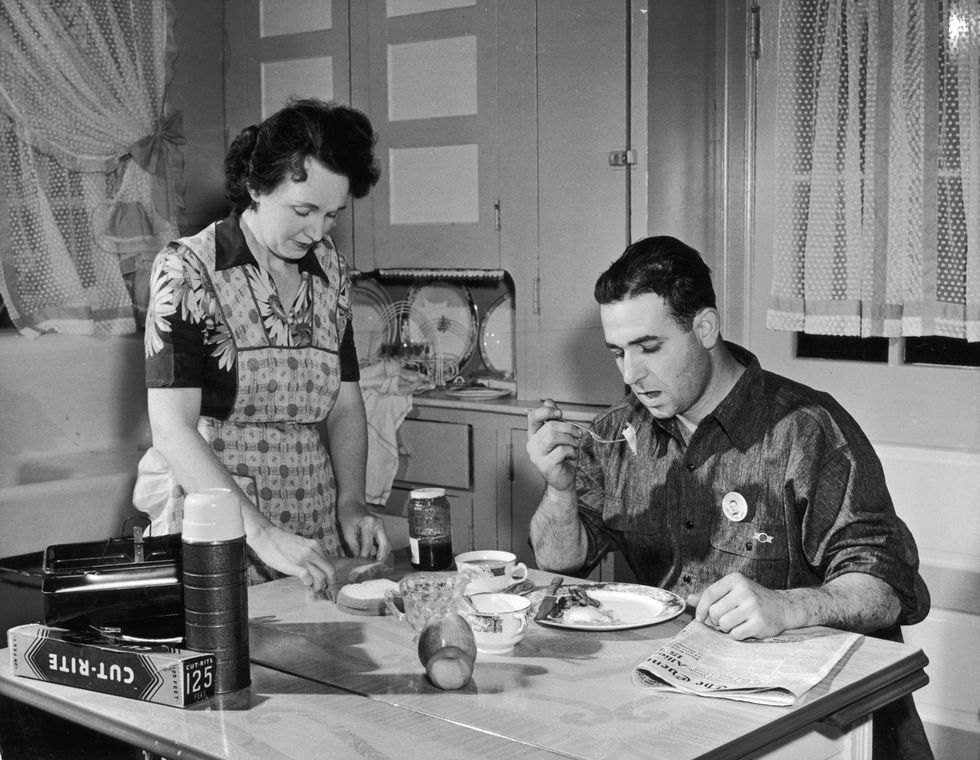 Harold M. Lambert / Getty
Harold M. Lambert / GettyUsing cow fat on your face is a direct extension of another trend: “the carnivore diet,” which consists of a diet high in protein and fats, low in carbs, without any fruits or vegetables. The carnivore diet has seen a rise in popularity, thanks to right wing influencers adopting the polarizing lifestyle, which is easy fodder for engagement. Some influencers have gone as far as to replace an energy bar with, you guessed it, a stick of butter.
The lines I’m drawing may seem too big brained, but beauty is always a response to larger political, societal, and cultural shifts, reflecting us back at ourselves in real time. Katherine Festeryga runs a popular TikTok account dedicated to how, when food prices have become higher than ever and many are struggling with food insecurity, food has become a status symbol. In this same way, only a few months after the butter shortage we saw at the end of 2024, the abundance of butter in beauty becomes even more suspect. In a world where everything is commodified, access to scarcity is one of the only remaining luxuries.
Arabelle Sicardi, beauty writer and author of the forthcoming book "The House of Beauty" has similar thoughts. “If eggs are now the new luxury, seesawing between purchase limitations and $50 for a dozen,of course dairy is going to echo the luxurious possibilities of simply being well fed,” they say. “We want ease, we want abundance, we want basic needs met. We're not actually getting any of these things met by the government or American society. So we're gravitating towards olfactory fantasy, where another world is closer to reach.”
Capitalizing on food scarcity was taken to an extreme when, at the height of 2025’s egg shortage when cartons were going for over $10 each, The Ordinary, an affordable, science-backed skincare bran, sold cartons of eggs for $2 less than Trader Joe’s. The marketing campaign did wonders for brand awareness, but was not without its controversy.
In The End, Maybe It's Just...Butter?
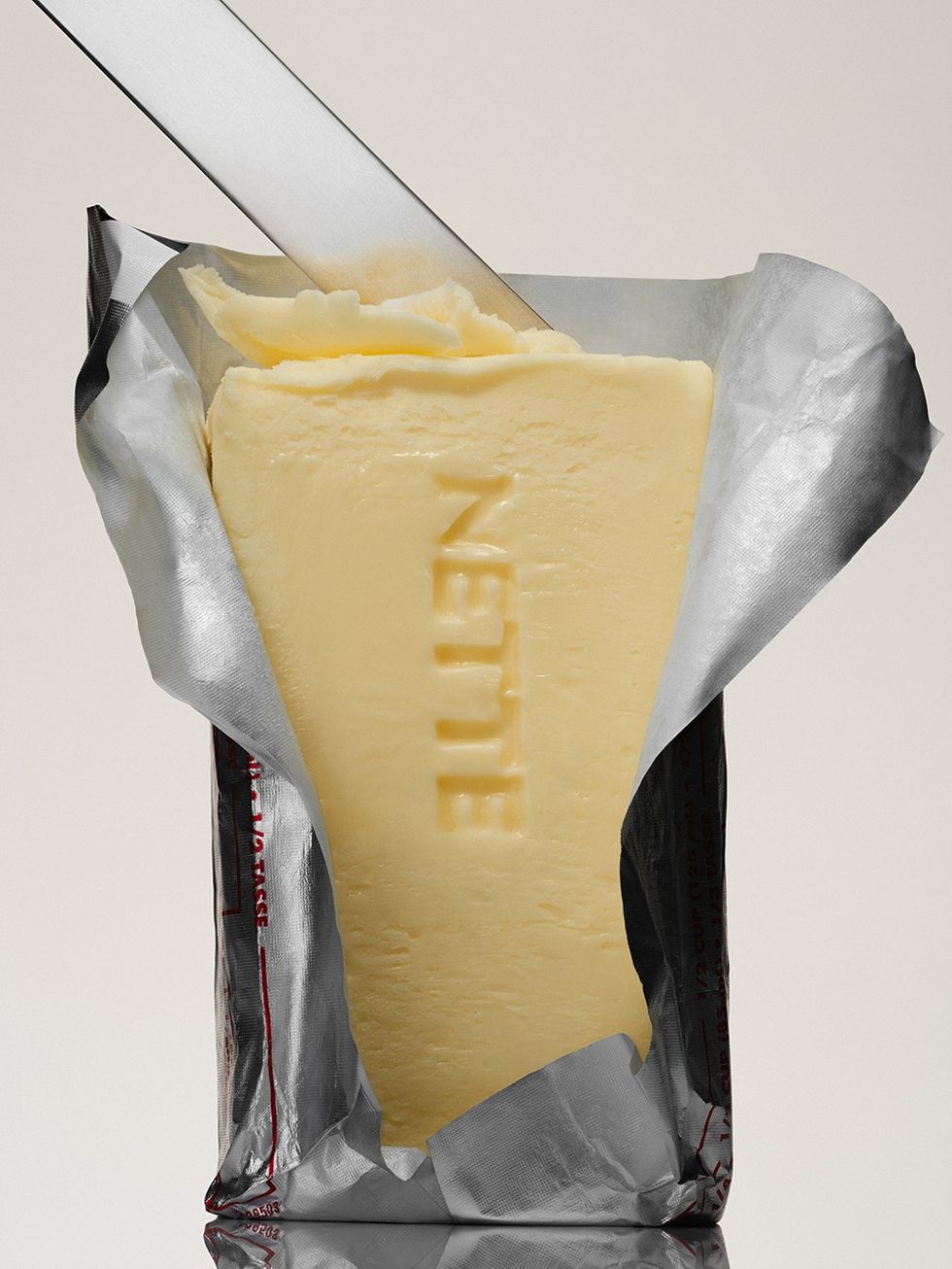
Nette
Perhaps the meaning behind the butter is for the viewer to ascribe. Do I see butter’s presence as something to be interrogated because the conservative wave of America is permeating nearly every industry and image we see? Maybe.
Or could this all be my paranoia? Am I experiencing some sort of neoliberal psychosis? Also maybe. But Petersen explains that a craving for nostalgia is not always a bad thing, and sees it through a more compassionate lens.
“I think it's harder to imagine a better future than it is to romanticize a past you didn't experience,” says Peterson. “Photographs and imagery do a lot of work too! You can serve audiences of pretty, smiling mid-century housewives and call it ‘great,’ but it's a lot harder to create image-focused branding based on hopes for a kinder, more equitable, more beautiful future.”
Imagery and marketing can never be divorced from the timeline they were born in, and tapping into the subconscious is not just how you sell a product, but how you create brand loyalty. It can be artistic, inspiring, it can drive culture forward, and even become more impactful and memorable than the product itself. But it’s just as important for consumers to interrogate and think critically about how they’re being marketed to. (For instance, the Nette Lemon Puff campaign was in part what sparked this whole piece. It is also one of my favorite fragrances of the summer.)
Butter has been a staple of cuisine, both stateside and globally, and a delicious source of indulgence and comfort for as long as our country has been around. While we can’t totally separate it from political trends and their implications, we can also hold two truths at the same time.
At its best, butter evokes tactility, indulgence, softness. “It’s a quiet luxury, something simple but approachable, a bit of decadence and soothing comfort food,” says chef and bakery owner Dominique Ansel. “I think we can all use a little comfort these days.”



